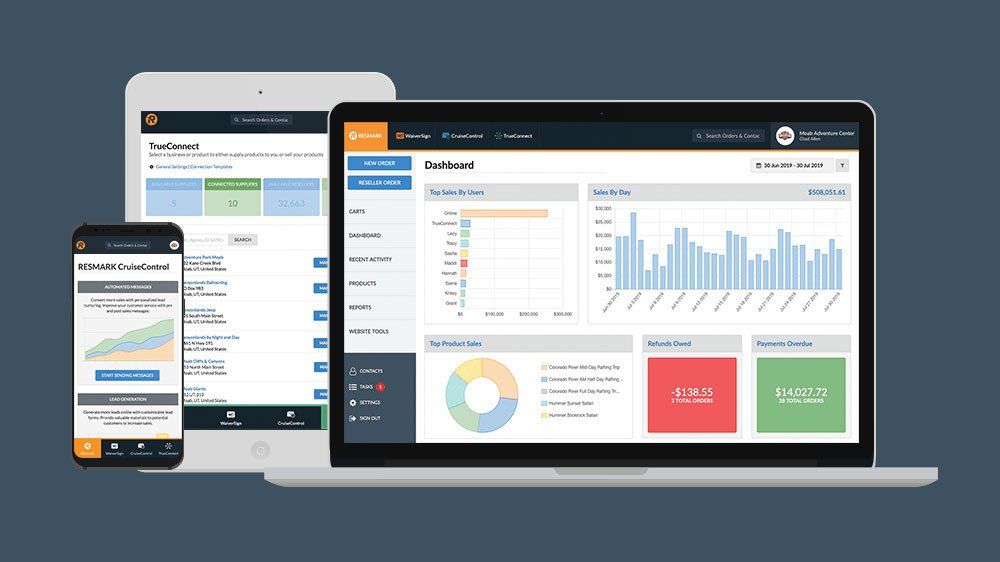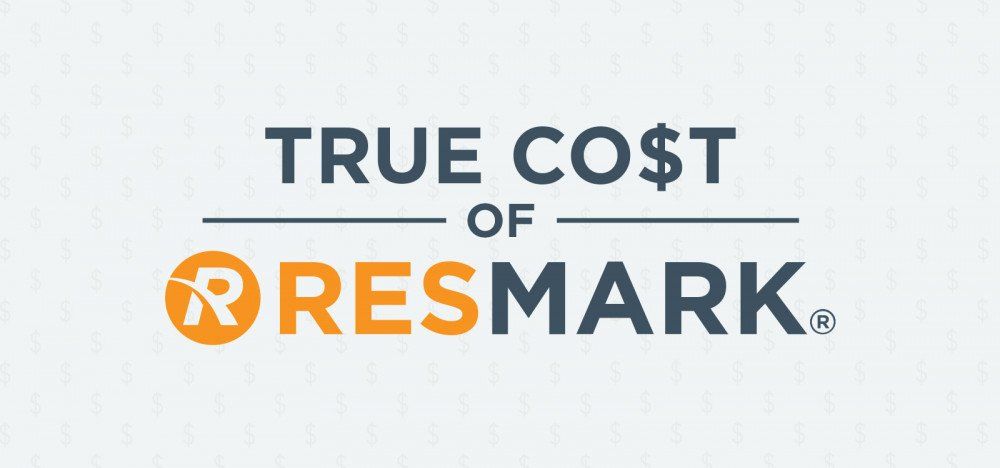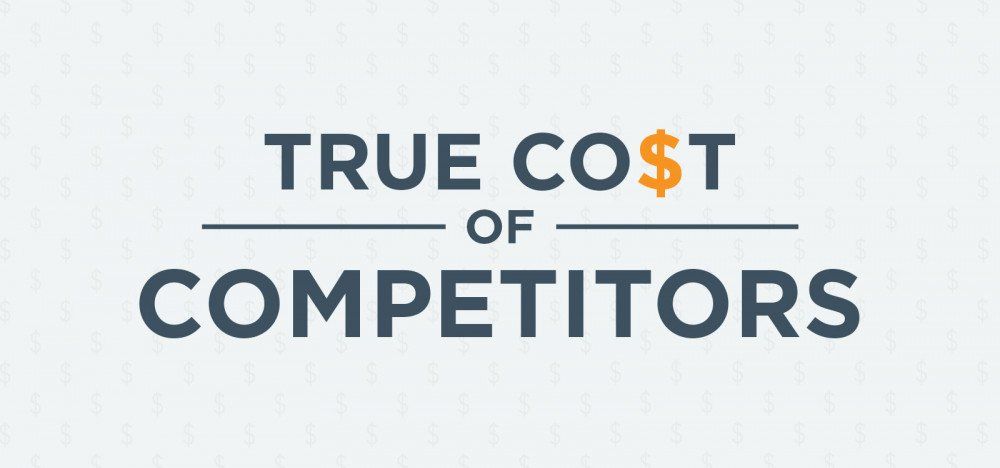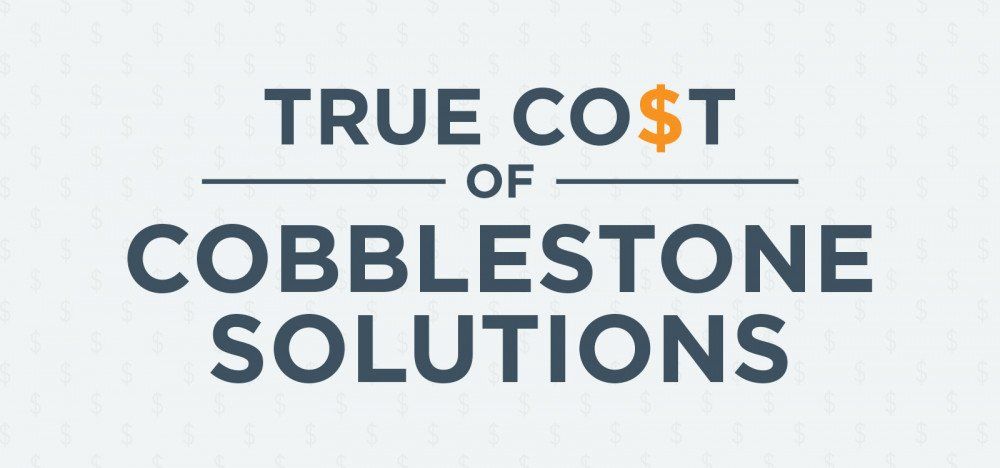How Much Does An Online Booking System Cost
A Back-of-the-Envelope Breakdown of Going Digital with Reservations
If you're reading this, odds are you're running a business that offers tours, activities, classes, or other date-based events to your guests. Odds are also good that you're currently reaching a point of critical mass in your work, where your manual systems are seriously hindering growth. You're probably thinking, "Man, a digital solution would be nice, but how much is it going to cost me?"
The answer is...well, it kind of depends on how you decide to get that solution.
When it comes down to it, you have three options regarding any digital solution: you can build your own, you can use someone else's, or you can go without.
Which one you choose will depend on your team's needs and your company's budget. Let's talk about each of them, so you know which one fits your business best.
Building Your Own Tour Booking App
Custom building online booking software is a great way to get exactly what you want. It's like the difference between going to a restaurant and ordering off the menu, and going home with ingredients and cooking exactly what you're craving. With a custom-built solution, you have complete control over what it looks like, what it can do, and what features you leave out.
This is why so many major corporations build their own tools. When you have the budget for it, developing an app that's custom fit to your organization is as great as having a pair of shoes molded to your own feet. When done right, it makes everything the company does a lot easier. And when there's problems or bugs, you just go back to the dev team and ask them to fix the issues.
You've probably already noticed the biggest drawback, though. Building an application requires a team of developers, either in-house or outsourced, and team like that do not come cheap. Coding is a skill that's in high demand, and companies pay through the nose for experienced professionals who do it well.
It always starts small. You hire one or two devs (or outsource to an agency) to build a simple app with only a handful of features. But as you start using the app, you start adding to the list of things you want it to do. This "scope creep" increases the work required to build and maintain the app, forcing you to hire a larger team to keep up with release dates. From there, the cycle recurs until app development is the largest item in your overhead and operating costs report.
It may seem easy to build an online booking software, but even the costs from start to initial release can reach as high as hundreds of thousands of dollars. Then, if you want to maintain the app (and you will want to maintain it), you'll need to pay the person (or people) who keep it updated. In short, it's an option that's nowhere near feasible for the majority of small businesses.
How We Did It
Full disclaimer: if you can't tell already, this is the option we chose here at RESMARK. RESMARK was built to service our needs as tour operators ourselves, running both Western River Expeditions and the Moab Adventure Center. What we're trying to say is that we know first-hand how expensive app development can be, and we can't recommend it unless your company size warrants it, or you're planning to take it to market.
Using a 3rd Party Online Booking System
Using a third-party solution is the most common route tour operators go when deciding on online booking software. That's because it's the best option for most businesses looking to switch to a digital reservation system. The truth is, the bulk of tour operators, day spas, yoga studios, and other date-based businesses are small outfits, and what they (read: you) are looking for is a way to cut down on paperwork and get back to offering the service they love.
Especially when you don't have a massive corporation with a wide variety of complicated needs, picking up a pre-built online reservation system can solve a lot of problems while costing a fraction of what building one would. The question is, which system should you use? For many businesses, it comes down to an issue of price. So let’s take a look at some hard numbers.
The Cost of RESMARK's Software
We'll start with what we know the most about: the system we built ourselves. We developed RESMARK because we were tour operators tired of running our bookings and reservations manually. With very few options on the market and some very specific needs on our part, we decided to build our own online booking software to solve our problem.
Once we realized that the reservation system we had built would benefit other companies as well, we started to share it. When we did, though, we knew we wanted pricing structures that were as straightforward and transparent as possible, so we kept it simple. Here’s the breakdown.
Our first pricing option is a straight transaction fee—3.5%. There's no monthly fee, and you can pass the fee onto the customer by including it in the final booking price. That's just $35 per $1,000 of bookings you sell. We recommend this option for businesses that don't operate year-round and don't want to pay for RESMARK when they’re not using it.
Our second pricing option is a hybrid option: a $95 flat monthly fee, plus a 2% transaction fee. So if you sell an average of $50,000 in reservations in a given month, that's a total of $1,095 a month (as opposed to $1,750 on our 3.5% pricing plan). We recommend this option for year-round businesses, especially if they have larger cash flows.
Finally, for businesses that process more than $3 million annually, we offer custom pricing in order to account for the larger volume of transactions.
What You Get
Our pricing options aren't tiers; they're designed to accommodate businesses with different financial needs. That's why, in all three pricing categories, we offer the full suite of RESMARK features. Here's what that suite includes:
- RES+Plus—our flagship online reservation and booking platform
- CruiseControl—our lead generation and marketing automation powerhouse
- WaiverSign—our fully integrated digital liability waiver solution (signing, tracking, and management)
- TrueConnect—our distribution channel manager; let your resellers connect to your real-time inventory tracking
The Cost of Competitors' Systems
As you might expect, the pricing structures of our competitors come in a lot of different shapes and sizes. When it comes down to it, though, there are only three ways that companies in our industry charge their clients:
- A flat monthly fee (sometimes billed annually)
- A flat, per booking fee
- A percentage-based per booking fee
The vast majority used some combination of the three in their fee schedules, even if just one percentage rate for online bookings, and one for offline reservations. And there’s quite the spectrum on all three types of fees.
These, of course, were only the competitors that listed their prices on their website. Most did not, leaving only a prompt to call in and talk to a representative to learn more (don't you hate it when you can't see the sticker price?).
Monthly fees, for example, range from around $40 on the low end, to almost $250 on the high end (for a total of almost $3,000 a year). Flat, per booking fees range from $.70 on the low end to $1.50 on the high end, making it costly if you process a large number of less expensive transactions. And we found percentage rates as low as 1% (when combined with a high flat monthly fee), and as high as a whopping 6% (without a monthly fee).
Now, for both kinds of booking fees, you have the option to pass that cost onto the customer by including it in the final price of the booking (just like you can here at RESMARK). In our experience, whether it's a subtotal of $100 or $3,000, lower transaction fees (around 3% or less) don't typically bother guests.
When you get into the neighborhood of 5 or 6% however, they tend to care that you're tacking on an extra $180 to their $3,000 bill. Some competitors do put a cap on how much they charge per transaction to keep these numbers from getting out of hand. Not all of them do, though, so you'll have to make some judgement calls on how much you think your customers will be willing to swallow in fees.
Another important detail: most of the pricing structures are complicated. There were a few that were straight commission-based (a percentage of each sale, usually pushed on to the guest), but the rest had different prices for different things. Among the most complicated was one that charged a flat monthly fee, a percentage of online sales, and a flat, per booking fee on offline sales.
Here's a good example. Some providers charge one transaction fee for online reservations and another for offline reservations. In these cases, the online booking fee is always higher, often by a significant margin. Others don't charge an offline fee at all, incentivizing guests to call in and book over the phone (which of course adds to your team's workload).
What You Get
Perhaps the most complicated part of the pricing structures of other online booking platforms is the fact that nearly all of them organize their offerings into tiers. In other words, getting the full functionality of their software required paying a high monthly price or even an annual licensing fee in one case.
Several of our competitors have features that rival what RESMARK offers, and in some cases, they support functionality that we don't support (at least not yet).
We would be the first to mention that our platform doesn't cover every use case, but we offer the full suite to every customer, regardless of the pricing arrangement.
With our competitors, most locked important tools behind higher price tiers. Functionality like external agent management, mobile app usage, POS usage, or integrated liability waivers (if they offered those at all). If it wasn't functionality that was lacking, it was some form of restriction—a limited number of users, a limited number of bookings per year, a limited number of partner accounts, or even limited methods of contacting support.
Bottom line: only a few competitors offered everything RESMARK can do, and of those, all of them locked away some of the functionality in a higher tier.
The Costs of a "Cobblestone" Solution
Of the solutions we surveyed, all of them covered at least online bookings, inventory and reservation management, and distribution channel management. It makes sense; it's the core of what businesses in the adventure travel industry do. Online digital waivers were less common, and few had features like lead generation and marketing automation.
We want to reiterate that we have yet to cover every possible need our clients and potential clients have. For example, RESMARK doesn't have the feature set yet to handle things like foodservice and retail goods. What RESMARK can do, though, is cover the core needs of most businesses in our industry: online booking, digital waivers, connecting to resellers, and increasing sales.
The point we're trying to make is that you get more for your money with RESMARK. Case in point, to replace our system, you’d have to cobble together multiple separate programs to meet the same needs. Let’s break down the numbers.
With RESMARK, selling $25,000 worth of tickets in a month either costs you $595 ($500 of which can be passed on to the customer), or $875 (all of which can be passed on to the customer). Compare that with the average rate for competitors that didn’t include a monthly fee (about 4.5%), which would cost you almost double at $1,125.
Beyond that, assuming the solution you've chosen also includes digital waivers (which, if you want unlimited signings, could cost you anywhere from $23 to nearly $500 a month), you have to account for lead capture forms and marketing automation.
There are a number of solutions on the market, and like booking and reservation system, almost all of them have pricing tiers, and the limitations are steep. The most common limitations are contact list sizes, page views, numbers of subscribers, number of users, and in some cases, whether or not you actually get the automation feature. We'll make it simple and use a popular platform: Hubspot.
Just to get the actual marketing automation, you'll be shelling out $800 a month* (none of which can be passed on to your customer).
To tally all of that up, you could be spending as much as $2,425 a month for a collection of tools that aren’t even integrated together.
Going Without Digital Reservations
At last (bear with us, we're almost done), we come to the final option: going without. Maybe you have a system that's been working fine so far (or, at least, that’s what you tell yourself as you toss and turn at night). To be fair, you're not alone.
More than half—55%—of tour and activity suppliers don't have an online tour booking solution. Among those suppliers, 67% just resort to using a calendar or email to manage all of their reservations. Sound familiar?
So it's popular to do it by hand. That must mean it works just fine that way, right? Maybe. But consider the following: 85% of travelers use mobile to book activities for their trips. Eighty-five percent.
This will be a very rough calculation, but if you're a $500,000 a year tour operator, and you don't have a way to offer online bookings, according to the above statistic, you could be missing out on as much as $3.3 million in revenue.
Ok, that's a very rough estimate. But it demonstrates just how much is being trafficked via online transactions.
Now, maybe all the paper trails and phone calls are getting you through, even if there's some overbooking, or lost sales due to lag in the reservation process, or missed opportunities because your guests can't order online, or less-than-stellar customer experience as you try to get everyone to sign their waivers as they show up in groups of 30.
Maybe you're ok with people visiting your website and bouncing, never leaving a trace that they were there, or giving you a way to offer them more.
Maybe you're ok with the frustrations of trying to manage all of the travel agents, concierges, partners, and other resellers who are trying to help you drum up business.
Maybe.
Or maybe it's time your operation got a whole lot easier to manage, a whole lot easier to scale up, and a whole lot cheaper to run.
Share This Post













